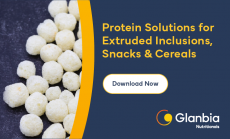‘Many businesses are not aware that there is a way to safely preserve these materials’: Trouw Nutrition on the business and environmental case for repurposing waste
Most food waste in developed countries comes from peoples’ homes. But high awareness of the problem is a powerful motivator for breweries, dairy processors and other food industry partners to amplify their existing efforts to reduce by-product waste, according to Trouw Nutrition.
The animal nutrition specialist is keen to stress there are economic and environmental incentives for the food and beverage industry to support a more circular production model.
For example, companies in the food/brewing industry typically pay for food waste to be transported to a landfill or converted into biogas. But there are more environmentally and financially sustainable solutions. By preserving the nutrients in these surplus foods so that they can be used in animal feed, food businesses can capture revenue from these by-products.
“Looking at the brewery sector as an example, the current value of liquid spent yeast is about €5 per percentage of dry matter per metric ton so the yeast by-product at a 15% dry matter level would have a value of €75/mt,” explained Evelien van Donselaar. Business Manager Food2Feed at Trouw Nutrition. “The challenge is preserving that value, as microbial proliferation will reduce the quality and nutritional value of spent brewer’s yeast, decreasing the value from €75 to €52.5 in just seven days.”
Feed additives are a potential solution: by mitigating yeast development and preserving nutrients they can allow food by-products and surplus food to be safely reused in livestock feeds.
What’s more, as well as maintaining the nutritional value of these by-products to be used in feed raw materials, these products can potentially help to control microbial contamination too.
The big winners here are the food companies, insisted van Donselaar, who can tap into rising demand from farmers. “Today’s farmers are increasingly charged with documenting their efforts to support sustainability, so making use of food by-products that have been diverted from landfills can support their circular production efforts. And as food safety is always priority one, preserving the nutrients so that they can safely be used in animal feed helps support feed and food safety.”
Diverting by-products can help companies meet net zero targets
At present, few companies are aware of the business case for repurposing waste, she added.
“It all comes down to making it an easy and efficient process for food companies to reduce waste streams. Breweries, dairy processors and other food manufacturers are in the business of safely producing food; not managing byproducts and surplus material. Many businesses are not aware that there is a way to safely preserve these materials, as a valuable material for another industry. All food companies have emission targets and diverting by-products can play a big role in meeting those targets.”
Repurposing waste to minimize supply chain disruption
Repurposing waste, meanwhile, makes further business sense at a time supply chain disruptions – from the likes of Covid, extreme weather and war in Ukraine – have dangerously exposed the failings in the current global food system.
“If we look at the current developments around the war between Russia and Ukraine, we see that it is also putting severe pressure on the world grain market, particularly in combination with a potential wheat export ban in Asia countries,” van Donselaar told us. “This will make it more important to source local raw materials. By-products or surplus food can play an important role in this, providing a more sustainable alternative as well.”
With 30-40% of food production lost between field to fork, this amount is creating part of the gap between current production and 2050 requirements, according to van Donselaar. In industrialized areas, 40% is wasted in the chain from processor-consumers plate, whereas in developing areas: 40% wasted in the chain from field-processors.
“With Trouw Nutrition’s Food2Feed programme we are creating an infinity between the food and agri industry, reducing waste while growing animal proteins using sustainable alternative raw materials.”















